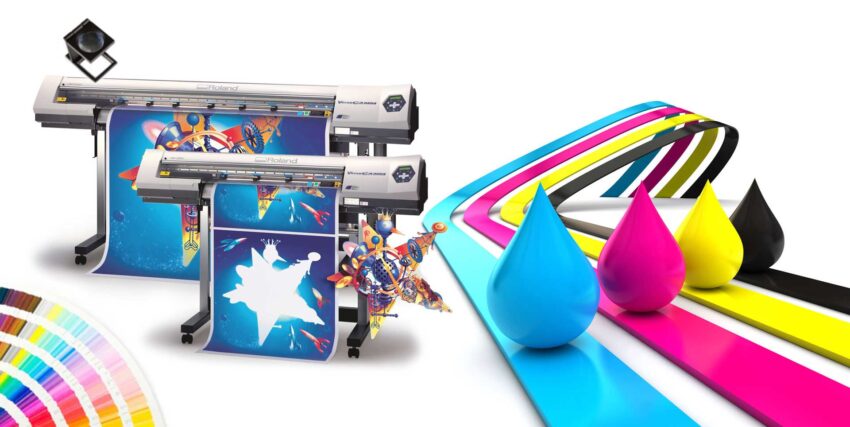On-Demand Printing
Digital printing allows printers to print materials on an as-needed basis, rather than in large pre-determined print runs like traditional printing. This minimizes waste since printers only produce what is needed. If additional copies are later required, printers can simply run off more without having to reconfigure printing plates or cylinders. On-demand digital printing is especially useful for short-run jobs, variable data printing, and versions of a printed piece that are customized for individual recipients. Rather than incur the setup costs of traditional printing for small jobs, digital printing makes it economical to print small quantities.
Variability
Digital presses offer a high degree of variability not possible with traditional printing. Variable data printing allows different text and graphics to be customized for each printed piece. This could include personalized letters, invoices, direct mail, and other one-to-one communications. Other variables that can be changed from piece to piece include images, text, fonts, colors, page layouts, and any other electronic content or design element. Unlike offset printing which requires new plates or cylinders for any variation, digital printing can switch designs on the fly. This degree of variability opens up new opportunities for customized campaigns and personalized communications.
Quick Turnarounds
By eliminating many of the stripping and plate-making steps of traditional printing, Digital Printing can achieve much faster turnaround times from file receipt to finished product. Depending on the quantity being run, jobs printed digitally can often be completed within hours or days rather than the weeks sometimes required by traditional commercial printers. The speed and agility of digital printing make it well-suited for applications requiring fast response such as event materials, promotional Items, direct mail, and point-of-purchase displays. The ability to produce materials closer to their time of need reduces risk of obsolescence and expedites delivery.
Wide Format Printing
Industrial digital printers are capable of handling much larger print sizes than standard sheetfed machines. Wide format printers can produce banners, posters, decals, signs, and other oversized graphics up to several feet wide. They are commonly used for super-wide format applications like billboards, wall murals, vehicle graphics, tradeshow displays, and architectural graphics. Some of the latest wide format printers offer printable widths of several yards. This makes them an essential tool for sign shops, graphics shops, printers servicing the display and exhibition industries, and other businesses producing supersized visual media.
Specialty Media compatibility
Digital presses are compatible with a wide variety of specialty media too delicate, complex, or awkward for traditional printing machines. This includes materials like plastics, fabrics, metals, glass, and other unusual or dimensionally stable substrates. Examples include printed circuit boards, ceramic tiles, textiles, wallcoverings, labels, transparent films and more. Some applications like printing on cylindrical or irregularly shaped objects are only possible using digital. The non-impact printing process avoids cracking or distortion issues that could occur when printing onto non-paper substrates on an offset press. Digital technology has expanded print onto almost any media.
Eco-friendly Production
With Digital Printing only the desired number of copies are produced which reduces paper, ink and other material waste when compared to conventional printing processes that require large print runs. Presses can be powered down during non-production periods to save energy. Some digital presses use plant-based inks and coated papers certified by third parties as sustainable. Print workflows are increasingly digitized as well, eliminating many manual and paper-intensive prepress steps. Overall, digital processes create less chemical, solid and energy waste throughout production and distribution compared to conventional printing factories. Promoting digital as a greener alternative can be a selling point for forward-thinking companies.
Cost-effectiveness
While the initial investment needed for a digital printer may be higher, the overall costs per printed piece for short and medium print runs are lower than traditional printing methods which have considerable fixed costs for plates, cylinders, and large minimum print quantities. As printing volumes increase, the price per copy drops significantly. For example, companies producing collateral or catalogs in quantities below 10,000 can save money opting for digital over conventional printing which has higher setup charges and per-piece costs for short runs. Other factors like faster turnarounds, versioning capability and wider media compatibility also contribute to digital printing’s overall cost advantages compared to traditional litho or flexo for certain applications.
Improved Workflow
Digital printing excels at streamlining print production workflows. Files are sent digitally to the printer directly from a computer or server rather than converted to plates or films. This eliminates labor-intensive processes like stripping, platemaking, and proofing. On-demand printing also enables a more dynamic, just-in-time workflow where materials can be produced, approved, and sent to
in an accelerated timeline. With digital, tasks like variable data merging, versioning, and file transfer between prepress and print stages happen automatically through integrated software. Overall digital processes are leaner, faster, and more conducive to small batch and personalized printing applications.
Print On Demand opportunities
Digital printing enables true print on demand business models where orders can be instantly processed and fulfilled without the need to forecast sales or maintain physical inventories. This has transformed how all kinds of publishers, e-tailers, self-publishers and other on-demand service providers operate. From photo books and catalogs to manuals and technical documentation—these types of products can now be produced individually as they are purchased rather than in pre-scheduled print runs. The reduced risks unlock opportunities for creative entrepreneurs to provide customized.
*Note:
1. Source: Coherent Market Insights, Public sources, Desk research
2. We have leveraged AI tools to mine information and compile it.

